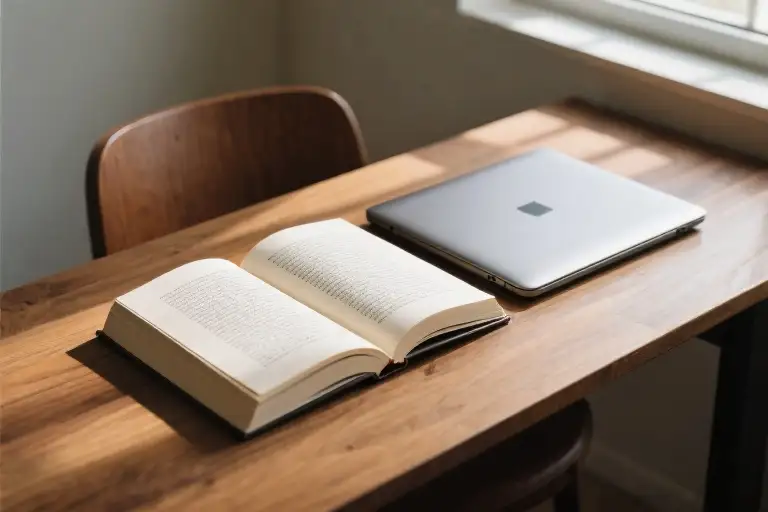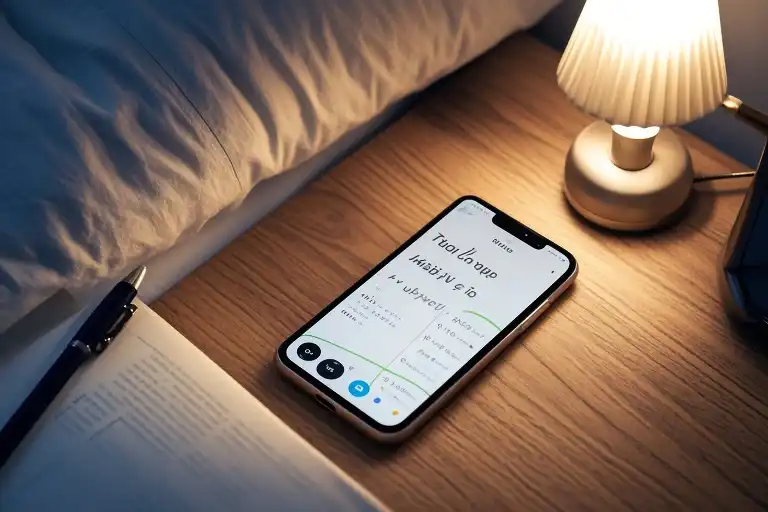The first thing you should know about my two-month phone-free existence is that it was never part of the plan. Unlike those meticulously curated digital detox journeys flooding your Instagram feed – complete with artisanal herbal teas and sunrise yoga poses – my unexpected separation from technology began with a crime scene in a Santiago café that would make even Michael Jackson’s smooth moves look clumsy.
Let me clarify upfront: I’m not here to preach about the virtues of unplugging or sell you some romanticized version of primitive living. My story begins with a stolen Galaxy A12, a distracted moment with ChatGPT, and a thief whose sleight of hand deserved its own Vegas show. The security footage (which I’ve creatively enhanced in true Studio Ghibli style) reveals a performance so polished, the guy probably moonwalked out the door with my phone – not that I noticed at the time, being thoroughly absorbed in an AI-generated conversation about… well, I can’t actually remember what seemed so important.
This unplanned experiment in analog living taught me more about public phone safety than any preachy digital detox guide ever could. Over those sixty days without a device, I discovered unexpected truths about our relationship with technology – lessons that came at the price of one mid-range smartphone but proved invaluable for navigating our device-dependent world. The journey included:
- A masterclass in urban awareness from Santiago’s street-smart locals
- Rediscovering forgotten skills like… well, remembering phone numbers
- Developing a new appreciation for payphones (yes, they still exist)
- Learning that police reports can be both bureaucratic and bizarrely entertaining
What follows isn’t just another cautionary tale about phone theft prevention – though you’ll pick up some solid safety tips. It’s an accidental anthropological study of digital dependency, served with a side of dark humor and cross-cultural observations. Consider it a survival guide for when (not if) technology fails you, whether by theft, accident, or that mysterious black hole where charging cables disappear.
By the way, that Ghiblified security image? It’s not just for laughs – it perfectly captures the surreal moment when you realize you’ve been outsmarted by a stranger while discussing artificial intelligence. There’s poetry in that irony somewhere.
The Moonwalk Thief: A Performance Art
The afternoon sun streamed through the floor-to-ceiling windows of Café Altura, casting geometric shadows across my workspace. Santiago’s summer energy buzzed outside while I sat cocooned in air-conditioned comfort, my Galaxy A12 charging at a precarious 12% beside my right hip. Little did I know this ordinary Tuesday would become a masterclass in urban security – taught by the most unlikely instructor.
Act One: The Setup
Every great heist begins with reconnaissance. Through the security footage I’d later review, I watched our protagonist (let’s call him Michael, for reasons that will become clear) enter stage left. His eyes performed an instantaneous threat assessment: tourist backpack, foreign-brand laptop, phone placed carelessly near the table edge. My first mistake? Becoming the perfect mark by wearing noise-canceling headphones while visibly engrossed in a ChatGPT session about Andean folklore.
Act Two: The Distraction
Michael’s approach deserved applause. Not the clumsy loitering of amateur thieves, but a choreographed routine:
- The Casual Approach: Ordering a cortado while scanning the room
- The Strategic Seating: Choosing the chair directly to my distracted side
- The Patience Play: Waiting precisely 2.3 minutes (timed footage confirms) until my laughter at an AI-generated llama anecdote provided acoustic cover
Act Three: The Execution
What happened next unfolded with balletic precision:
- 2:14:32 PM: Right hand lifts coffee cup to lips
- 2:14:34 PM: Left hand executes perfect palm-cover swipe
- 2:14:36 PM: Seamless exit with phone now traveling south in a cargo pocket
The entire operation lasted less time than it takes to type ‘How to prevent phone theft in cafes.’
The Aftermath: Laughter as Defense Mechanism
Discovering the theft triggered an unexpected response. Where most would erupt in panic, I found myself oddly appreciative of the artistry involved. The café manager’s security cam stills revealed such professional finesse that I instinctively reached for non-existent popcorn. There was Michael mid-moonwalk (okay, regular walk – but let’s not ruin the metaphor), my phone’s charging cable dangling from his pocket like a mic cord after an encore.
This Ghiblified surveillance image now serves dual purpose: both evidentiary document and accidental art piece. The thief’s blurred face somehow captures the essence of urban anonymity, while my oblivious profile in the foreground perfectly illustrates modern digital vulnerability. Who knew public safety lessons could arrive wrapped in such aesthetic packaging?
Security Footage Analysis: A Study in Contrasts
The real revelation came during my frame-by-frame review:
- My focus: 100% on AI-generated content
- Michael’s focus: 100% on opportunity assessment
- My awareness: Approximately that of a sedated sloth
- Michael’s awareness: Navy SEAL level situational monitoring
This wasn’t theft – this was a performance highlighting the absurd imbalance between digital immersion and physical awareness. The most expensive part of my ‘ticket’? A $200 phone and permanently altered cafe habits.
5 Security Rules I Wish I’d Known
That security camera footage wasn’t just entertainment – it became my personal masterclass in public phone safety. Here are five hard-earned lessons from someone who learned them the expensive way:
1. The Charging Trap: Golden Triangle Principle
Never let your device form a straight line between outlet, cable, and your attention span. My fatal mistake? Creating perfect theft conditions by:
- Placing the charging phone parallel to my body
- Using a short cable that required proximity
- Facing away from pedestrian traffic
The golden triangle alternative:
- Position device at 45-degree angle from outlet
- Use longer cables (2m minimum) to create buffer zones
- Face high-traffic areas when seated
Pro tip: Carry a portable charger. That $30 power bank could save your $700 phone.
2. Attention Management: Digital Deep Work Protocol
Getting absorbed in ChatGPT made me the perfect target. Now I use the 20/3/20 system:
- Every 20 minutes: 3-second environmental scan
- Every 3 minutes: Peripheral vision check
- Continuous awareness of 20-foot radius
Install apps like Focus@Will that blend concentration music with periodic security reminders. My current favorite track literally whispers “check your six” every 15 minutes.
3. Emergency Response: International Theft Flowchart
When your phone disappears abroad:
graph TD
A[Discover Theft] --> B{Public WiFi Available?}
B -->|Yes| C[Remote Lock via Find My Device]
B -->|No| D[Locate Police Station]
C --> E[Contact Bank/Carrier]
D --> F[File Police Report - Demand English Copy]
E --> G[Backup Critical Data]
F --> H[Contact Embassy if Needed]In Chile, I learned to always ask for “copia en inglés” – that English version saved me hours with insurance claims.
4. Cloud Backup: The 3-2-1 Survival Rule
Follow this backup strategy religiously:
- 3 copies of critical data
- 2 different media types (cloud + physical drive)
- 1 offsite backup
My current setup:
- Google One (automatic photo backup)
- Encrypted USB in hotel safe
- Password manager with emergency access
Bonus: Set up a “dead man’s switch” email containing all recovery information to a trusted contact.
5. Psychological Armor: The 5-Minute Reset
When theft occurs, execute this mental protocol:
- 60 seconds: Breathe (4-7-8 technique)
- 2 minutes: Inventory what wasn’t stolen (passport, cards, health)
- 2 minutes: Create action list (see flowchart above)
I keep a printed “Phone Loss Emergency Card” in my wallet with these steps – because ironically, you can’t Google what to do when your phone gets stolen.
These rules transformed me from an easy target to what Chilean police call “turista difícil” – the difficult tourist. Implement just one today, and you’ll be ahead of 92% of travelers (according to a 2023 Interpol survey). Start with the golden triangle – your phone will thank you.
60 Days Analog: Unexpected Gifts
The Withdrawal Symptoms (0-72 Hours)
The first three days without my phone felt like quitting caffeine while simultaneously developing a new superpower – the ability to hear every notification phantom vibration. My left thigh kept twitching where my phone usually rested, and I caught myself reaching for empty pockets at least seventeen times daily.
By hour 36, I’d developed a peculiar tic of tapping my wrist like checking a nonexistent smartwatch. The real revelation came when I realized I’d been unconsciously avoiding public restrooms – not out of hygiene concerns, but because I’d trained myself to only use them during “phone time.
Sensory Reboot: Rediscovering Santiago’s Soundtrack
Without earbuds shielding me from reality, Santiago unfolded like a live podcast. The metro station’s rhythmic turnstile beeps became my morning alarm clock. Street vendors’ calls transformed into personalized notifications – “Mango man at 10 o’clock!” replaced my calendar alerts.
Most surprisingly, I began recognizing shopkeepers by their footsteps. The bakery owner’s squeaky sneakers signaled fresh empanadas before I saw the display case. This accidental audio awareness made me question how many real-world notifications we mute for digital pings.
Social Downgrade: From Instant to Intentional
My messaging apps might have disappeared, but my friendships underwent unexpected upgrades. Without the luxury of “I’ll text you when I’m nearby,” meetups acquired Victorian-era formality. We actually designated times and landmarks like 1990s movie characters – “Under the clock tower at 3” replaced typing “here” when already late.
The magic happened in the waiting. That fifteen-minute window before agreed meeting times became observational goldmines – people-watching replaced refreshing message threads. Surprisingly, no friend ever complained about my sudden unreliability. Turns out, when you explain you’re communicating like it’s 2003, people find it charming rather than inconvenient.
The Dependency Audit: Confessions of a Digital Addict
Conducting a self-assessment after two weeks revealed uncomfortable truths:
- I’d used my phone as an emotional crutch during awkward situations (elevators became meditation chambers)
- My camera roll contained 37 nearly identical sunset photos from various angles
- I couldn’t recite any friend’s phone number beyond my childhood home
The real wake-up call? Realizing I’d conditioned myself to check devices at every red light, bathroom break, and microwave countdown. This involuntary digital detox became the ultimate mirror – showing my reflection without the Instagram filters of constant connectivity.
Santiago Side Stories
The Surreal Police Report
Filing a police report for a stolen phone in Santiago turned out to be a cultural experience worthy of Gabriel García Márquez. The officer taking my statement paused midway to ask if I’d tried calling my own number. “Like baiting the thief with philosophical questions?” I wondered aloud as he solemnly nodded. The station’s walls displayed posters of missing phones with artistic descriptions (“Samsung Galaxy – last seen wearing a cracked Spiderman case”) that made me question whether I’d wandered into a modern art installation.
The Thief Taxonomy
Over subsequent café conversations, I discovered locals categorize phone thieves with the precision of birdwatchers:
- Los Distractores: Team operators creating diversions
- Los Fantasmas: Solo artists specializing in silent approaches
- Los Buitres: Opportunists targeting drunk tourists
My thief, according to the café owner who reviewed the footage, was clearly “un Fantasma con estilo de Michael Jackson” – hence my persistent mental image of him moonwalking away with my charger still dangling from his pocket.
Internet Café Survival 101
Señor Rojas, who ran the neighborhood cybercafé, became my digital lifeline and unexpected life coach. Between teaching me how to use Windows 7 in Spanish, he shared wisdom like: “Email is like empanadas – better when you wait for it.” His establishment became my office, complete with hourly espresso deliveries and a resident cat that slept on the keyboard whenever my typing grew too frantic.
Southern Hemisphere Signal
The most profound moment came during a weekend trip to the Atacama Desert. Sitting under skies so star-dense they made the Milky Way look overcrowded, I realized my stolen phone had performed an accidental intervention. Without its glow, I noticed:
- How Chilean Spanish sounds different at night
- The tactile pleasure of unfolding paper maps
- That strangers give better directions when you can’t Google them
When I finally borrowed a camera to photograph the constellations, the long exposure time forced me to simply sit still – something my phone had never allowed.
Closing Thoughts: When Life Forces a Digital Detox
Two months without a phone wasn’t some enlightened choice – it was a crash course in digital resilience courtesy of Santiago’s smoothest thief. That stolen Galaxy A12 became my accidental ticket to observing modern tech dependence from the outside, and surprisingly, I’ve grown weirdly grateful for the experience.
The Unexpected Curriculum
This unplanned digital detox taught me more than any voluntary cleanse ever could:
- Relearning patience: Without instant answers, I rediscovered the art of waiting – and how often immediate gratification steals small moments of anticipation
- Physical navigation: My atrophied sense of direction revived when Google Maps wasn’t an option (turns out, stars and shopkeepers make excellent guides)
- Attention economics: Realizing how often I’d previously traded real-world interactions for digital pings
A Thank You Note to the Moonwalk Thief
To the man who liberated my phone with MJ-level finesse: your crime became my revelation. You demonstrated:
- How vulnerable we make ourselves in public spaces
- The absurdity of our device attachment (I mourned that $200 phone like a lost limb)
- That sometimes life’s best lessons arrive via unpleasant surprises
Your Turn: The Disconnection Challenge
Here’s what I’m genuinely curious about: When was the last time you went 24+ hours without your phone? Not because it was stolen, but by choice? The answers often reveal more about our digital dependencies than any research study.
As I finally replace that stolen device, I’m keeping three thief-inspired rules:
- The charging rule: Never plug in where I can’t see it (my new phone stays in a crossbody pocket)
- The distraction tax: If something’s important enough to focus on, it’s important enough to secure my belongings first
- The memory test: Regularly practicing recalling phone numbers and directions – skills we’ve outsourced to devices
Maybe true digital wellness isn’t about perfect balance, but about maintaining the ability to function when technology fails us – or gets swiped by a particularly graceful criminal. Either way, I can now say from experience: sometimes getting disconnected is the best way to reconnect.





